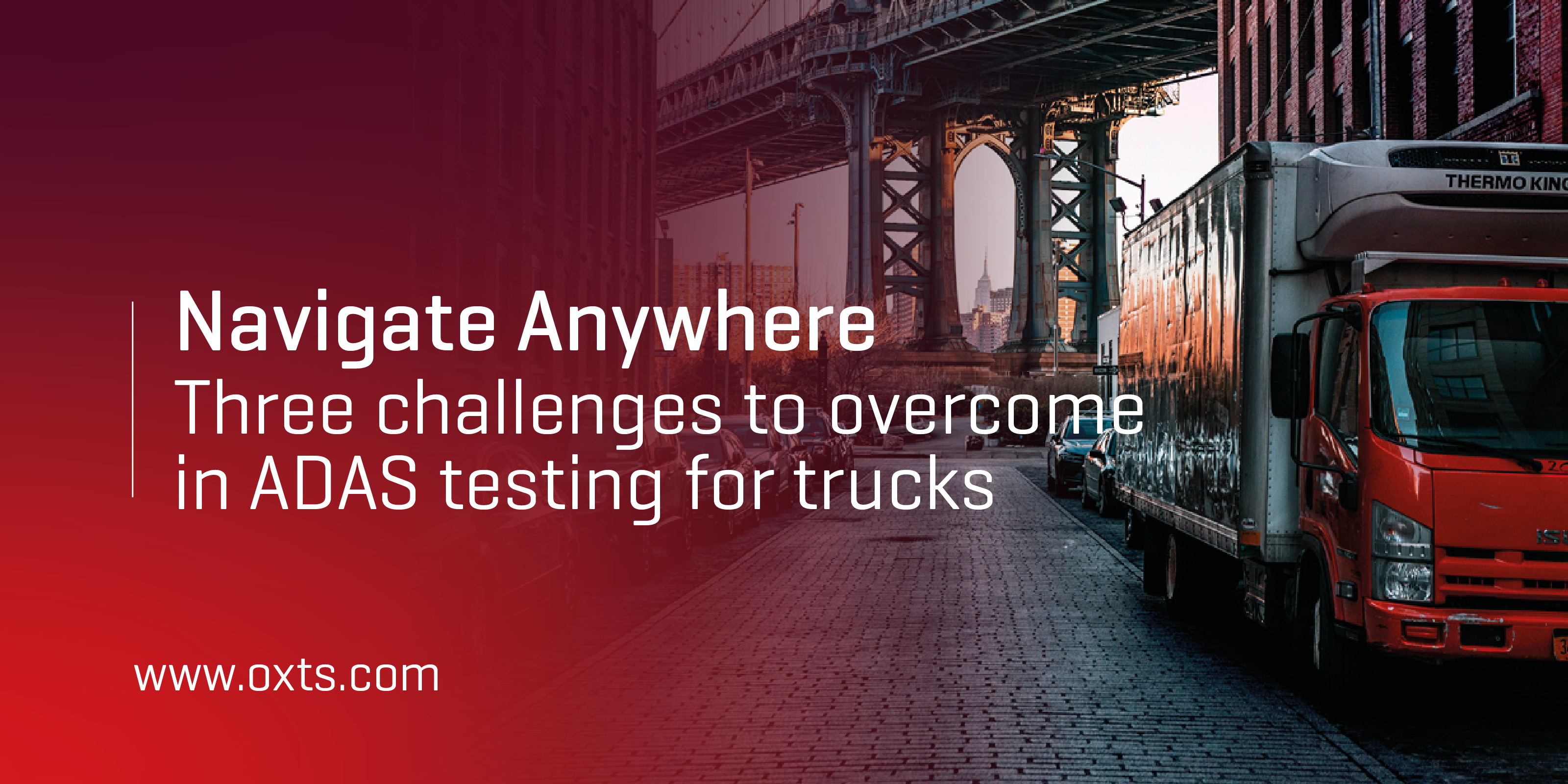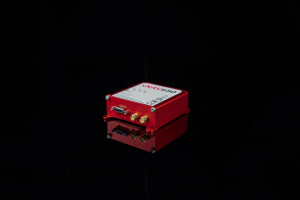

Three challenges to overcome in ADAS testing for trucks
Truck safety is a hot topic right now in the automotive industry. Euro NCAP announced in April that their first ever Heavy Truck safety rating tests are here, with the first ratings to be announced in November 2024 and with crash testing beginning in 2030.
The rationale is that trucks are involved in far more road fatalities than cars. Euro NCAP’s figures say that despite only accounting for 3% of the vehicles on Europe’s roads, trucks are involved in almost 15% of all EU road fatalities; accidents between trucks and vulnerable road users (VRUs) make up 25% of all EU fatalities.
So, it’s great news that truck ADAS technology is getting some attention. But it highlights the fact that heavy vehicles don’t use ADAS as much as passenger vehicles do. Autonomous emergency braking (AEB) has been used in trucks for a few years now, but other ADAS systems are rare on trucks. And in the words of Euro NCAP, “[AEB performance] has not been as high as in passenger cars.” So, what’s the problem?
In this blog, we’re going to dig into three challenges that truck manufacturers and ADAS testing providers will face as they strive to get ready for the new Euro NCAP tests.
1: Fitting ADAS technology is more complicated on trucks
Trucks are big, and trucks are tall. That makes fitting the sensors used in ADAS systems different (and therefore more complicated) than with cars. For instance, cameras are often mounted higher up on the vehicle, because they usually go behind the windshield to protect them from dirt and damage. But a camera mounted higher up will see other vehicles differently to a car-mounted camera, meaning the algorithm would need to be adjusted for the system to recognise the vehicle at all. Even the fact that many trucks, like buses, have flat fronts instead of elongated bonnets needs to be accounted for when building an ADAS solution for heavy vehicles.
2: Trucks behave differently to cars
To activate at the right time, ADAS technology has to be able to work out what the time-to-collision is. That’s based on some inputs – distance from a vehicle or a VRU, the speed of the vehicle in question, and so on – and also on data models that provide information such as the braking distance of the car. But trucks, of course, have vastly different braking characteristics to cars. Worse still, the same truck cab can have different braking characteristics depending on whether they are towing lead pipes, or pillows, or liquid, or gas.
If your ADAS system deploys too late, then accidents still happen. But if they deploy too early, the truck could behave erratically, making it more dangerous than before, and essentially undrivable.
There are other characteristics that are different, too. For example, we’ve all seen truck cabs bouncing back and forth as they move through stop-start traffic. That movement could be enough to cause a camera to lose sight of the target in front of it – what effect will that have on AEB or VRU protections? Many trucks are articulated, changing how they behave when braking or in an accident, and introducing the potential for jack-knifing accidents. That behaviour also needs to be accounted for when programming when and how ADAS technology deploys.
3: ADAS testing is more challenging
Any ADAS system will need time on the test track to validate that the sensors are working properly. But trucks may need more time than cars because they take longer to get to the right testing speeds. And, of course, the introduction of the Euro NCAP tests for trucks means that existing tests for AEB will need to be refined, and a wider range of tests will need to be completed.
Those tests may need to use robotic platforms to represent VRUs and target vehicles, all of which will need synchronising with the vehicle under test (VUT), and lanes will need to be surveyed for lane departure warning tests.
On top of this, Euro NCAP is also starting to place greater emphasis on real-world testing rather than just the test track. As we’ve discussed before, real-world testing introduces new challenges for ADAS testing in general – and heavy vehicles will have to overcome those challenges, too.
ADAS test expertise needed to solve those challenges
There’s no reason why AEB, or any ADAS technology, cannot work just as well on trucks as it does on passenger cars. None of the challenges we’ve described here, after all, are insurmountable:
+ Algorithms can be modified to account for sensors being placed higher up on trucks, or truck designs can be modified to place sensors lower down.
+ New data models can be built that describe how trucks behave on the road.
+ Top-end ADAS testing solutions can be used to make proving ground testing fast and reliable, and to improve the accuracy of open-road testing.
What’s needed is a deep understanding of how ADAS technology works, how to adapt it for trucks, and highly accurate sensor data to validate that any new models and algorithms are working as expected. Using RT-Range, for instance, gives ADAS engineers working on heavy vehicles a great way to gain vehicle dynamics data that’s accurate enough to comply with Euro NCAP standards, and to understand exactly how the VUT interacts with another vehicle, or a VRU, in a test run.
We’re excited to see how the future of ADAS in heavy vehicles progresses in the coming months and years. And, crucially, we’re excited to see the new Euro NCAP standards deliver on their goal of reducing road fatalities involving trucks and lorries, making roads safer for everyone.
Solution Brief: ADAS Testing
If you’d like to learn more about how to build a best-in-class ADAS testing solution, including key considerations for your project, click below to download our solution brief.

Read the solution brief to learn how you can use OxTS INS devices to take ADAS feature testing to new heights.
Do you have questions about this article?
Get in touch with Oxford Technical Solutions - OxTS, and they would be happy to answer any questions you have about pricing, suitability, availability, specs, etc.









